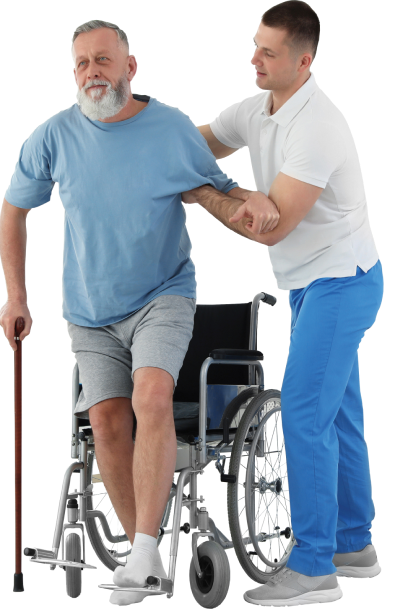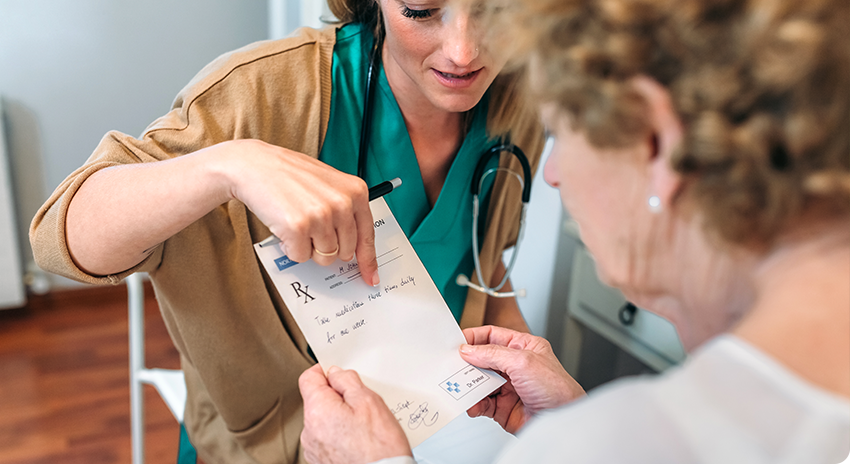An advanced procedure restores normal food movement through the esophagus.
In spring 2020, Gerald (Jerry) Corrado and his wife, Nancy, of Franklin Lakes came down with COVID-19 like many others. While neither needed to be hospitalized, they were sick for six weeks. Both recovered, but during his illness, Jerry developed a cough that wouldn’t quit.
“It would be so bad that I would start vomiting,” says Jerry, who owns specialty grocery stores in Clifton. “I thought it would go away, but four years later, I still had it.” The condition affected eating: During meals he would suddenly need to regurgitate.
Regurgitation also happened at night, and Nancy became worried. With her encouragement, Jerry consulted several specialists before being referred to interventional gastroenterologist Petros Benias, MD. As Co-Chief of Endoscopy, Robert Wood Johnson University Hospital; Vice President, GI Clinical Operations, RWJBarnabas Health; and a member of RWJBarnabas Health Medical Group, Dr. Benias offers advanced gastroenterology care.
A special test called esophageal manometry helped diagnose Jerry’s problem. The test involves inserting a catheter with pressure sensors down the esophagus—the tubelike structure that transports food from the mouth to the stomach—in order to gauge muscle contractions. Results confirmed that Jerry had a rare swallowing disorder called achalasia.
Achalasia consists of two important esophageal dysfunctions: The esophagus does not transport food correctly as a result of poor contractions, and its lower valve fails to relax. In essence, Jerry’s esophagus was in a constant state of spasm that would not allow food to pass. Food and liquid kept coming up, causing his condition to be confused with esophageal reflux.
“In severe achalasia, the esophagus becomes dilated and enlarged, and the opportunity to treat it with straightforward interventions becomes difficult,” says Dr. Benias.
When caught early, achalasia can be treated by cutting the lower esophageal sphincter, and today this can be done with minimally invasive endoscopic surgery. In end-stage achalasia, sometimes the entire esophagus needs to be removed.
An Innovative Solution
Dr. Benias had the expertise to recommend a procedure called POEM (peroral endoscopic myotomy). Performed on an outpatient basis, POEM involves the use of an endoscope—a flexible tube with a light and camera attached.
“We pass the necessary tools through or along the endoscope and cut the muscle of the lower esophagus,” Dr. Benias explains. Loosening the muscles allows the esophagus to empty its contents.
“The majority of patients do very well,” says Dr. Benias. “Most go home the same day.”
That was true for Jerry. “I went in one morning, they put me out, I woke up and I was fine,” he says. After a day of fasting and a few weeks on a special liquid diet, he felt back to normal.
While POEM is available in most states, not all gastroenterologists are trained to perform it. “It requires tremendous expertise and training,” Dr. Benias says.
Dr. Benias and other specialists are working with national gastroenterology organizations to train more physicians. “We’ve created courses and workshops to help the next generation learn the techniques of POEM,” he says.
What causes achalasia isn’t clear. One theory is that having an inflammatory condition or autoimmune disorder can damage or destroy the small nerves in the esophagus. “COVID-19, like other viruses, may be associated with achalasia, but we don’t have the data on that,” Dr. Benias says. Other treatments for achalasia can include doing surgery, inflating a balloon in the esophagus to enlarge the opening or administering Botox.
Learn more about digestive health care at RWJBarnabas Health.
View full issues of Healthy Together magazine by New Jersey region:Northeast, serving the community of Jersey City Medical Center in Jersey CityNorthwest, serving the communities of Clara Maass Medical Center in Belleville, Cooperman Barnabas Medical Center in Livingston, Newark Beth Israel Medical Center in Newark, Robert Wood Johnson University Hospital in Rahway, and Trinitas Regional Medical Center in ElizabethCentral, serving the communities of Robert Wood Johnson University Hospital in Hamilton, New Brunswick and SomersetSouth, serving the communities of Community Medical Center in Toms River, Monmouth Medical Center in Long Branch, and Monmouth Medical Center Southern Campus in Lakewood

 877-318-0529
877-318-0529




 Service Areas
Service Areas























